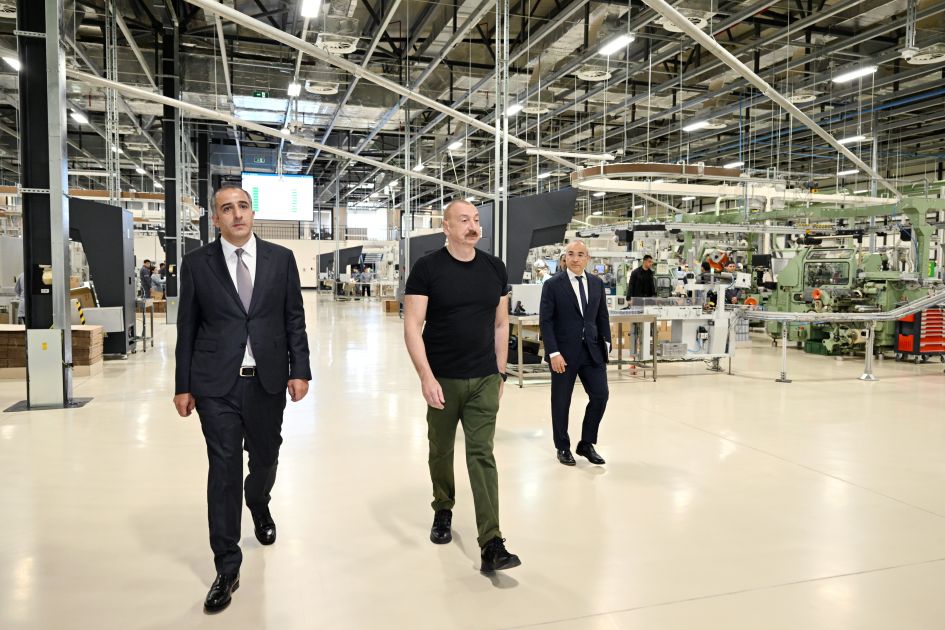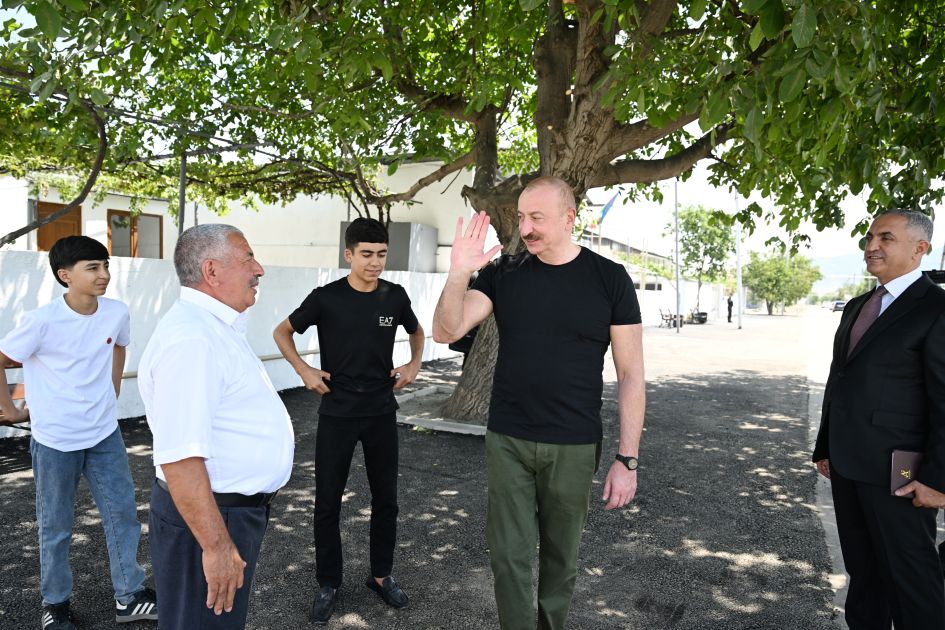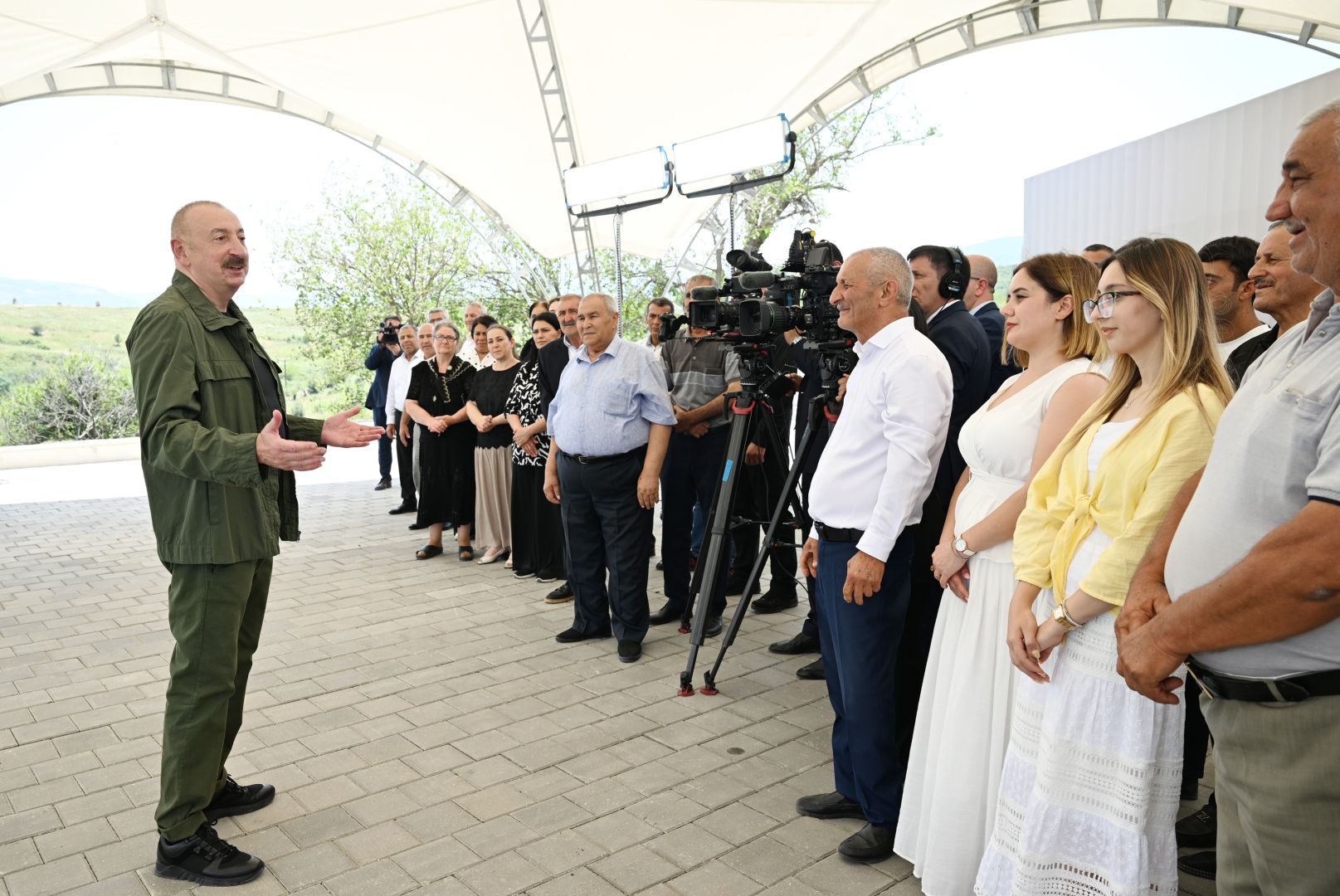On July 18, President Ilham Aliyev made a landmark visit to several key areas of the liberated Garabagh region, including Aghdam and Khojaly. His trip, centered on inaugurations, inspections, and meetings with resettled citizens, was more than ceremonial - it reflected a calculated and accelerating state-driven agenda of reconstruction, economic revival, and demographic return. It also underscored the political significance of state-building in the post-conflict territories as part of Azerbaijan’s long-term vision.
Azerbaijan continues to methodically restore economic and social life in the territories liberated from Armenian occupation during the 2020 Second Garabagh War and the 2023 anti-terrorist operations. These efforts are strategically anchored in the “Azerbaijan 2030: National Priorities for Socio-Economic Development”, particularly through the "Great Return" program - a cornerstone initiative aiming to reestablish civilian life, infrastructure, and economy across Garabagh and Eastern Zangazur.
Aghdam: From ghost city to economic powerhouse
Aghdam, once symbolizing the devastation of war, is now rapidly evolving into an industrial and socio-economic hub. The inauguration of a tobacco manufacturing facility by “Tabaterra” LLC at the Aghdam Industrial Park reflects the government’s dual strategy: attracting investment and fostering employment.
Established under President Aliyev’s decree in 2021, the Aghdam Industrial Park is a linchpin in Azerbaijan’s regional industrialization. Covering 190 hectares, it has attracted AZN 270 million in investments so far and houses 30 resident enterprises. These developments signify more than economic growth - they represent a reintegration of Aghdam into Azerbaijan’s national economic grid.
The presence of global tobacco brands via licensing agreements (British American Tobacco, JTI, Imperial Brands) positions the region as a node in international value chains. Tabaterra’s integration of modern technologies and emphasis on export markets illustrate a vision that moves beyond local recovery to global competitiveness.
Equally notable is Tabaterra’s commitment to social stability: providing free housing to employees through apartment purchases in the “Aghdam Residence” complex sets a precedent in corporate contribution to demographic return and housing sustainability.
The inauguration of Aghdam city secondary school No. 1, with its capacity for 960 students and state-of-the-art laboratories, represents more than infrastructure development. It reflects a strategic investment in human capital. By including STEAM education, the government is aligning the region’s educational system with global academic standards and preparing youth for the digital and innovation-driven economy.
The parallel opening of nursery-kindergarten No. 1 reinforces this education-first approach. In a region where multiple generations were deprived of stable education, the focus on early childhood development highlights the government’s long-term approach to resettlement and societal rebuilding.
President Aliyev’s visit to the restored Giyasly mosque, a monument heavily damaged during the Armenian occupation, was deeply symbolic. Beyond architectural reconstruction, this initiative - led by the Heydar Aliyev Foundation - is part of a broader policy to reclaim cultural identity and collective memory in the liberated territories.
The restoration followed rigorous archival research to preserve authenticity, and it serves as both a place of worship and a cultural-political statement of revival. It illustrates Azerbaijan’s multidimensional approach: not just reconstructing what was lost, but reinstating historical continuity.
Khojaly: From tragedy to reconstruction
In Khojaly, the President’s engagements spanned both the symbolic and the strategic. Visits to the Tazabina and Khanyurdu villages, along with the Khojaly brick factory inauguration, showcase efforts to balance rural development with industrial revitalization.
The Khojaly brick factory, with its AZN 8.5 million investment and use of modern European technologies, is expected to double its workforce in the coming years. Its annual production capacity of over 16 million bricks will directly contribute to the reconstruction efforts across Garabagh, ensuring that local resources fuel local development.
Residential restoration in Tazabina and Khanyurdu includes more than 400 homes by 2026, modern water and energy infrastructure, telecommunications, medical centers, educational facilities, and recreational parks. This integrated development model is a case study in how post-conflict reconstruction can be operationalized through synchronized efforts in housing, utilities, health, and education.

President Aliyev’s visit sends a clear message both domestically and internationally: Azerbaijan is not merely reclaiming land - it is reconstructing life. His meetings with resettled families humanize the process and validate the government’s narrative of peaceful return and coexistence.
The extensive state support - from tax and customs exemptions to infrastructure subsidies - reveals an understanding of economic incentives as a peacebuilding tool. These policies are not only attracting private investors but also reestablishing a productive demographic presence in regions that were depopulated for nearly three decades.
President Ilham Aliyev’s July 18 visit is emblematic of Azerbaijan’s multi-tiered strategy in Garabagh: restore, resettle, and revitalize. The integration of industrial, educational, cultural, and infrastructural projects into a unified policy framework presents a potential model for post-conflict recovery in other regions of the world.
While challenges remain - particularly around mine clearance, environmental concerns, and full-scale population return - the state’s actions indicate a decisive move toward irreversible normalization in the liberated areas.
As Azerbaijan positions Garabagh as a contributor to national GDP, not just a recipient of aid, it shifts the narrative from war recovery to strategic advancement.

